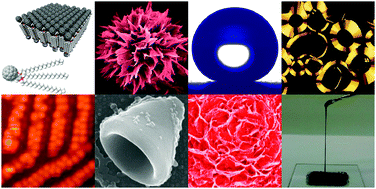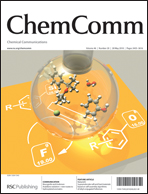Supramolecular soft and hard materials based on self-assembly algorithms of alkyl-conjugated fullerenes
Abstract
Dimensionally controlled and hierarchically assembled supramolecular architectures in nano/micro/bulk length scales are formed by self-organization of alkyl-conjugated fullerenes. The simple molecular design of covalently attaching hydrophobic long alkyl chains to


 Please wait while we load your content...
Please wait while we load your content...